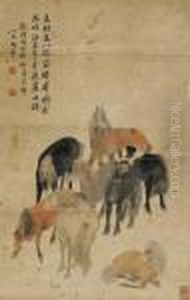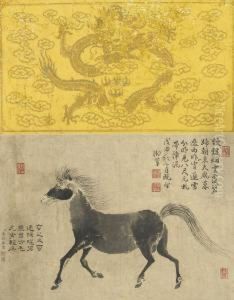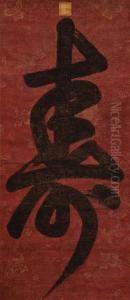Emperor Qianlong Paintings
Emperor Qianlong, born Hongli, was the sixth emperor of the Qing dynasty in China, ruling officially from 1735 to 1796. Although not an artist by profession, Qianlong was an important patron of the arts and contributed significantly to Chinese art history, especially in the areas of painting, calligraphy, and poetry. His era is often referred to as the 'High Qing' and is known for its cultural achievements.
Qianlong was the fourth son of Emperor Yongzheng and inherited the throne at the age of 24. His reign of 60 years (he abdicated in favor of his son but maintained significant power until his death) is one of the longest in Chinese history. Qianlong was an enthusiastic collector of art and antiquities, and his reign saw the compilation of the largest collection of artworks and writings in Chinese history, some of which he contributed to personally.
During his reign, Qianlong commissioned the 'Qianlong Emperor's Southern Inspection Tour' scrolls, a series of paintings documenting his travels through the south of China. He also expanded the imperial workshops and encouraged the production of art that blended traditional Chinese styles with themes and techniques from other parts of the world, such as Europe. The Qianlong Emperor was a prolific poet, having composed thousands of poems during his lifetime, and he also had a deep interest in calligraphy.
Qianlong's legacy in the art world is complex. While he greatly enriched Chinese culture and the arts, his extensive collecting habits and the scale of the imperial workshops also led to a certain uniformity in the art of the period. After his death, the Qing dynasty began to decline, and some historians argue that the vast expenditure on the arts and his luxurious lifestyle may have contributed to the financial strains on the empire.



